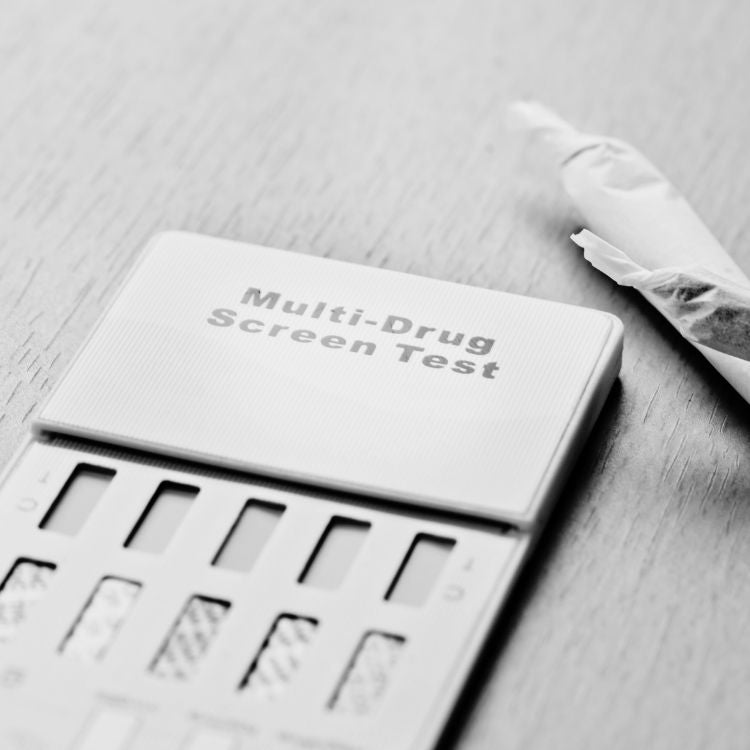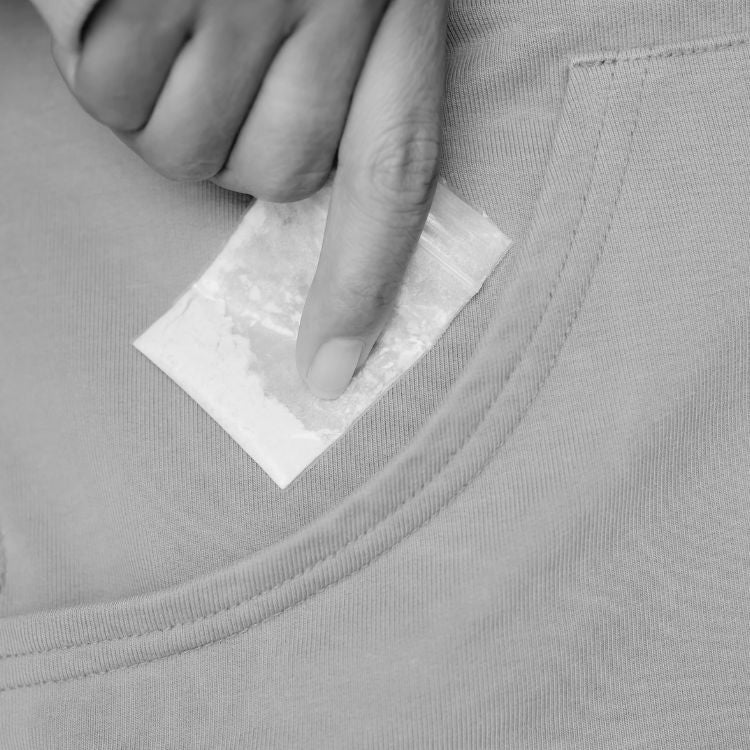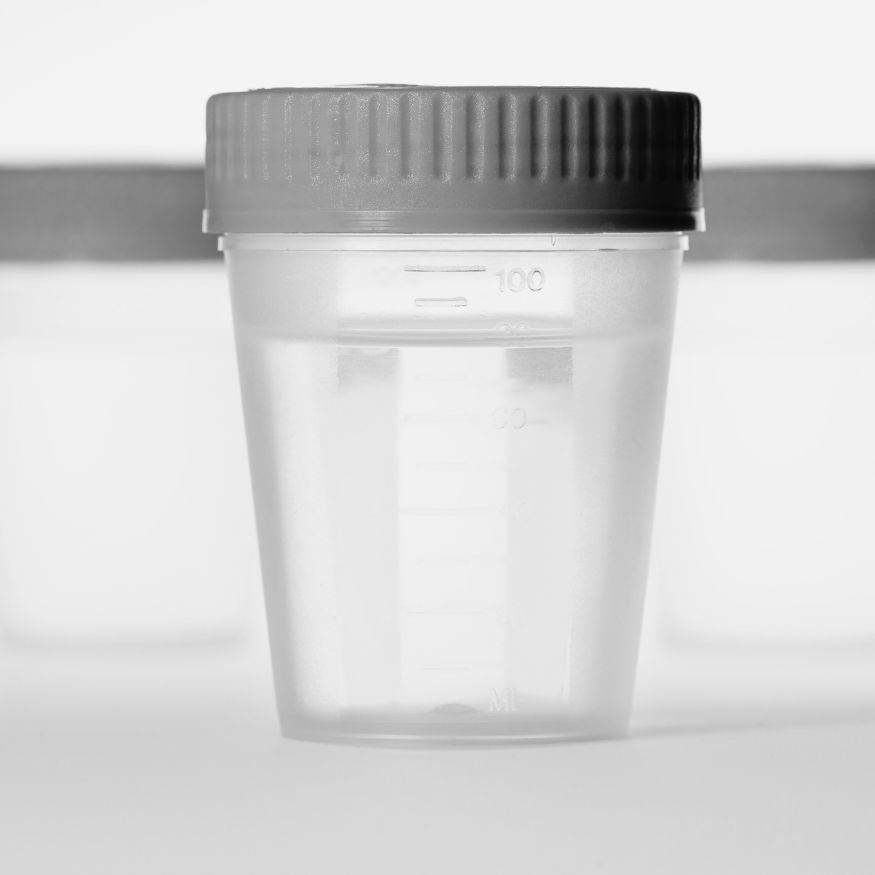There are many misconceptions about the differences between saliva and urine drug test kits, particularly around accuracy. But are the two options really that different?
The short answer is no – as a general rule, both saliva and urine kits are equally as accurate, fast, and easy to use. However, there are some small differences between the two collection methods that may influence which product will work best for you.
To help you pick the right Drug Alert test kit for your specific needs, we’re breaking down the differences between saliva and urine test kits, from the drugs they detect to how they are used. Keep reading to learn more about these drug testing methods so you can accurately screen for drugs in your system and make safe, informed choices.
Which drugs do urine and saliva drug test kits detect?
Both our urine and saliva drug tests detect a range of street and prescription drugs, depending on the kit you select. Drug Alert test kits are available for the following substances:
- Marijuana (THC)
- Cocaine
- Opiates
- Amphetamines
- Methamphetamines (speed, ice)
- MDMA (ecstasy)
- Barbiturates
- Tricyclic antidepressants
- Benzodiazepines (benzos)
- Methadone
Each of these drugs can stay detectable in the body for a different length of time, ranging from 48 hours or less, all the way up to 30 days or more. It’s also important to note there’s no one-size-fits-all time frame, as everybody will metabolise (and react to) drugs differently, depending on their height and weight, their metabolism, how strong the dose they took was, and how much they took. Mixing drugs can also prolong the ‘life’ of certain substances in your system.
Here’s a rough guide to saliva and urine drug test detection times. Remember, these times are just estimates – to ensure you keep yourself and others safe, you should always conduct an at-home test and receive a negative result before you engage in potentially risky post-drug taking behaviours like driving or working.
|
Substance |
Time detectable |
|
Marijuana (THC) |
Up to 40 days or more, depending on how frequently you use |
|
Cocaine (COC) |
2-4 days |
|
Opiates (OPI) |
2-3 days |
|
Amphetamines (AMP) |
2-4 days |
|
Methamphetamines (MET) |
2-4 days |
|
Methylenedioxymethamphetamine (MDMA) |
2-4 days |
|
Tricyclic (TCA) |
2-7 days |
|
Barbiturates (BAR) |
1-3 days |
|
Benzodiazepines (BZO) |
1-4 days |
|
Methadone (MTD) |
1-3 days |
Which drug test is most accurate?
The more accurate the drug test kit you’re using is, the better your peace of mind – after all, the aim of drug testing yourself at home is ensuring you’re safe to perform certain activities, such as going to work or driving. Luckily, the majority of our Drug Alert tests, across both urine and saliva testing methods, are 99% accurate.
The only exception to this is the Drug Alert Marijuana Saliva Test Kit, which is 95.6% accurate. As a result, if you’re specifically trying to detect marijuana in your system, our 99% accurate Marijuana Urine Test Kit may provide a safer option – especially as marijuana can take more than 30 days to leave your system completely if you are a heavy user.
What is the likelihood of receiving a false positive result from a drug test kit?
We’ve all heard stories of false positives arising from drug tests, but the technology now uniformly used by drug testing providers around Australia has drastically reduced the likelihood of this occurring. This is due to the implementation of testing cut-off levels.
All Drug Alert test kits have a cut-off level for testing that varies depending on the type of substance. This is to minimise the potential for false positives that previously may have arisen due to secondhand exposure (i.e., secondhand smoke from being in close proximity to marijuana users or crystal methamphetamine residue) or trace amounts of certain drugs found in medications.
These cut-off levels are standardised across all Australian substance abuse test kits, including test kits used for roadside drug testing, workplace drug testing, and in medical settings.
|
Drug |
Testing cut-off level (nanograms per millilitre) |
|
Marijuana (THC) |
50ng/mL |
|
Cocaine (COC) |
300ng/mL |
|
Opiates (OPI) |
300ng/mL |
|
Amphetamines (AMP) |
300ng/mL |
|
Methamphetamines (MET) |
300ng/mL |
|
Methylenedioxymethamphetamine (MDMA) |
500ng/mL |
|
Tricyclic (TCA) |
1000ng/mL |
|
Barbiturates (BAR) |
300ng/mL |
|
Benzodiazepines (BZO) |
200ng/mL |
|
Methadone (MTD) |
300ng/mL |
While testing cut-offs have made false positives much less likely than they were previously, the majority of Drug Alert test kits are still only 99% accurate – so in extremely rare circumstances, you may still receive a false positive or negative result. If you are unsure of your result, we recommend taking another test or trying a different collection method.
Which drug testing kit is easier to use?
The ability to quickly and easily test the levels of drugs in your system can help immensely with informed decision-making. Our Drug Alert urine and saliva drug testing kits are both very simple to use, and deliver results in just five minutes.
How to use a saliva drug test kit
One of the most evident pros of using a saliva drug test kit is that it doesn’t require access to a bathroom to collect your sample. This makes saliva drug testing ideal if you are out and about, at an event such as a party or music festival.
To use one of our Street Drugs Saliva Drug Test Kits, open the kit and remove the test (which also serves as the collection device) from the sealed pouch. Ensuring you haven’t had anything in your mouth for the last 10 minutes, remove the cap from the provided device and swab the inside of your mouth thoroughly along the gums with the absorbent side. After you have swabbed the gums 10-15 times, place the swab under your tongue for around 60 seconds. After 3 minutes, read the test – if all lines show, this indicates a negative result. If only one line shows, reread the test after 10 minutes. If the test continues to show only one line in the control section, this indicates a positive result.
To use the Drug Alert Marijuana Saliva Test Kit, the oral fluid collector and collection chamber are separate, so the saliva sample must be inserted into the collection chamber before transferring this liquid onto the test cassette – similar to an oral COVID-19 test. Once again, ensuring nothing has been in the mouth for 10 minutes prior to testing, use the oral fluid collector to swab around the mouth until it is fully saturated. Unscrew the collection chamber and place your swab into the liquid. Gently shake the chamber for 10 seconds, then leave for 10 minutes before inverting the chamber and squeezing 3 drops onto the test cassette. Read results after 5 minutes and before 15 minutes – if two lines appear, the test is negative; if one appears, the test is positive.
How to use a urine drug test kit
As the name suggests, urine drug screen test kits require you to collect a sample of your urine, so you’ll need access to a bathroom to conduct the test. Simply urinate into a container, then immerse the test strips on the provided test card into your specimen for 10-15 seconds. Wait five minutes before reading the test results. A positive test will display one line on the test card, and a negative test will display two.
When it comes down to it, the differences between urine and saliva drug test kits are very slight, however you may select one testing method over another due to convenience, where you plan on taking the test, or the level of accuracy you require. All Drug Alert test kits deliver accurate, rapid results to provide you with the peace of mind to go about your life safely.
Rapid test kits produced by Drug Alert only provide a qualitative preliminary analytical test result. A secondary analytical method must be used to obtain a confirmed result.




